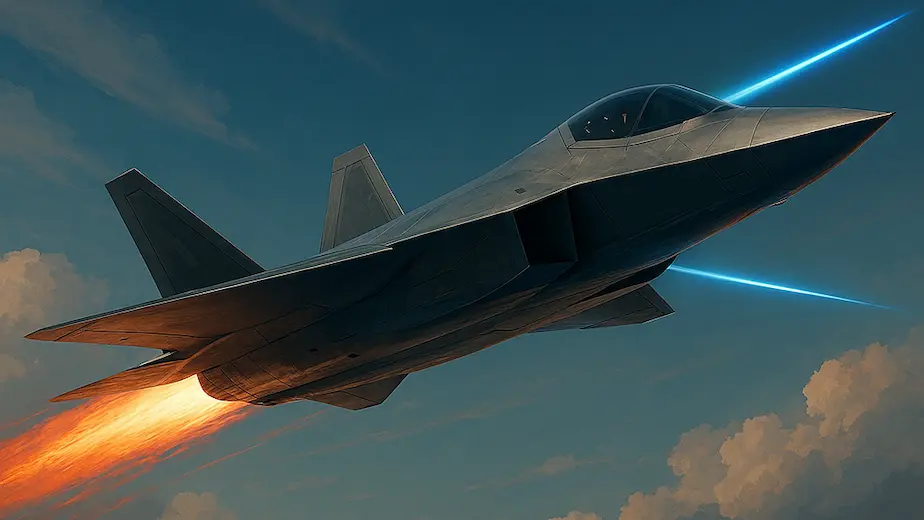
The future of aerial combat with a Mach 5 stealth fighter jet powered by AI and laser weapons (representative image)
Mach 5 and Beyond: The Speed That Changes Everything
Sky Dominance Redefined – India’s leap into sixth-generation fighter technology marks a seismic shift in its defense capabilities. With Mach 5 speed, five times the speed of sound, this aircraft isn’t just fast; it’s a strategic game-changer. At such velocity, the jet can intercept threats in record time, penetrate deep into enemy territory, and execute missions with unmatched agility.
This blistering speed also enables rapid deployment across vast distances, making it ideal for India’s diverse terrain and geopolitical challenges. Whether it’s the Himalayas or the Indian Ocean, this fighter jet can be anywhere, fast. Combined with advanced propulsion systems and heat-resistant materials, the aircraft is designed to dominate both airspace and headlines.
Stealth, AI, and Laser Weapons: A Triple Threat
What truly sets this fighter apart isn’t just speed—it’s the fusion of stealth, artificial intelligence, and directed-energy weapons. The jet’s radar-evading design uses next-gen composite materials and adaptive camouflage, making it nearly invisible to enemy detection systems. This stealth capability ensures survivability in hostile environments and gives India a tactical edge in contested zones.
Artificial intelligence plays a central role in mission execution. From autonomous navigation to predictive threat analysis, AI transforms the cockpit into a smart command centre. Pilots are no longer just flying, they’re collaborating with a digital co-pilot that processes data in real time, suggests manoeuvres, and even controls drone swarms.
And then there’s the laser. Yes, laser weapons. These directed-energy systems can disable enemy electronics, intercept incoming missiles, and neutralize threats with pinpoint accuracy, all at the speed of light. It’s not science fiction anymore; it’s India’s defense reality.
Strategic Leap: From Regional Power to Global Force
India’s sixth-generation fighter jet isn’t just a technological marvel, it’s a geopolitical statement. For decades, India has balanced regional defense needs with global aspirations. This aircraft signals a bold transition: from reactive defense to proactive deterrence.
The jet’s development is part of a broader push under the “Make in India” initiative, with indigenous R&D, private-sector collaboration, and strategic partnerships with global aerospace leaders. It reflects India’s commitment to self-reliance while embracing innovation at scale.
Operational deployment of this fighter will elevate India’s status in global military rankings. It will enhance interoperability with allies, strengthen deterrence against adversaries, and reinforce India’s role as a security provider in the Indo-Pacific. In short, it’s not just a jet—it’s a symbol of strategic autonomy.
Sky Dominance Redefined – The Road Ahead: Challenges, Opportunities, and Vision
While the excitement is justified, the journey to full deployment is complex. Developing sixth-gen fighters demands cutting-edge research, robust testing, and seamless integration with existing defense infrastructure. India must invest in pilot training, maintenance ecosystems, and cybersecurity protocols to protect the jet’s digital brain.
But the opportunities are immense. This fighter jet can catalyse innovation across sectors, from materials science to AI, from avionics to quantum computing. It can inspire a new generation of engineers, scientists, and defense strategists. It can also boost exports, with friendly nations likely to seek collaboration or acquisition. India’s defense doctrine is evolving, and this aircraft is its sharpest spearhead. As the skies get more contested and warfare becomes more digital, India’s sixth-generation fighter jet ensures it won’t just keep up it will lead.
Also read – Tejas Mk1A Takes Flight: India’s Indigenous Jet Challenges Global Giants in 2025 Skies
Stay updated with latest updated news blogs on Rapido Updates.